SHOES – WHAT YOU DON’T KNOW CAN HURT YOU
BASICALLY PUT, healthy feet are a result of good support, lack of injury, good nutrition, good genetics, and good hygiene. In this chapter, we are going to focus on what to avoid and what to look for in shoes. Poor Shoes |
Some people believe less support is better. They talk about how it’s not natural to wear shoes, and that doing so makes the muscles in our feet weaker.
These are my thoughts on such claims.
I agree, it is not natural to wear shoes. But I also realize it is not natural to walk on hard, flat surfaces all day. If we were running around outside on natural, soft, uneven surfaces, then yes, we should all be barefoot.
However, most of us walk on at worst concrete floors or, at best, carpeted floors. If we don’t wear shoes with arch supports, our poor feet are subjected to unnatural forces that sprain or strain our arches over time, leading to collapsed arches, plantar fasciitis, and/or heel spurs.
Plus, the extra cushion found in good shoes helps pad the blow of our heel striking the ground, which saves our knees, hips, and back from the jarring forces that otherwise lead to their early degeneration.
To know what shoes are good for your specific needs, you first have to understand your feet. As mentioned in Chapter 3, your feet may be over-pronating, supinating, or positioned neutrally (Figure 17-1).
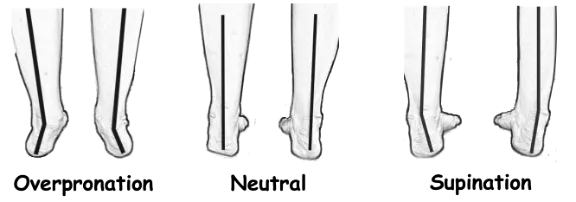
Figure 17‑1
If your feet overpronate, you need orthotics that will support your arches and help control the motion of your gait.
If your feet supinate, you will need more cushion because your higher rigid arches don’t absorb as much shock as they should. You may also need high arch supports to prevent your arches from collapsing.
If your feet are healthy, keep them that way by supporting them with good-fitting supportive shoes.

Figure 17‑2: Different feet need different shoes and insoles.
Understanding your feet will help you determine the type of shoe that is perfect for your needs (Figure 17-2).
With this said, watch out for shoes that have a bubble of extra support in the heel (Figure 17-3).

Figure 17‑3: Example of an insert with a bump in the heel region.
Having extra cushion under the heel may sound like a good idea, but this often causes more pressure to be exerted on the heel bone, leading to heel pain. The pressure of the bubble can irritate the tendon of the plantar muscles or the plantar ligaments (like the plantar fascia), causing them to be rubbed raw. This can result in plantar fasciitis or heel spurs.
I prefer a hallowed-out area for the heel (Figure 17-4). That way the pressure is shifted to the edges of the heel bone, instead of placed on the center where the plantar fascia anchors.
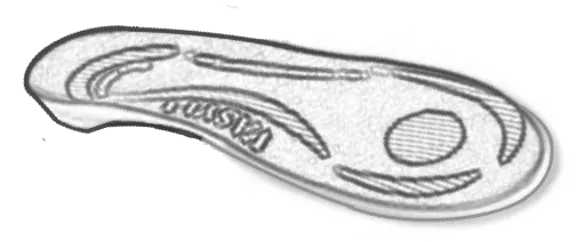
Figure 17‑4: An insert with a hollowed-out heel.
High Heels
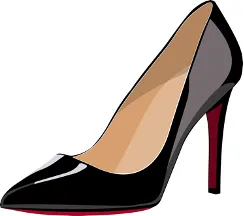
I hope it is obvious how wearing high heels puts stress on your feet, ankles, knees, and muscles of the feet and lower legs. But it also causes your pelvis to tilt forward and compresses your low back, which can cause hip and low back pain.
I have had patients who came in to be treated for low back pain that was caused by wearing high heels at work for so many years. They thought they could only wear high heels because their lower legs hurt when they wore flat shoes. Wearing heels for so long caused their calf muscles to shorten, so they could no longer bring their heels to the ground. Wearing flats became impossibly uncomfortable, so they wore heels all the time, making their over-shortened calf muscles even shorter. Eventually they developed low back pain.
If you never bring your heel to the ground, one day you won’t be able to. Remember, if you don’t use it, you lose it.
With daily stretching and wearing incrementally shorter heels, these patients were able to stretch their calf muscles enough to where they could wear flats again. Once they were able to wear flatter shoes, their low back pain went away.
Flip-Flops - how they can hurt you
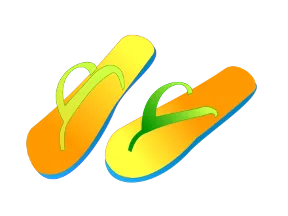
Any shoe that makes you change your normal gait puts abnormal stressors on your body. Flip-flops fall into this category.
You have a big calf muscle in the back of your lower leg to toe off. When you wear flip-flops, your toes have to grip to hold the shoe on, and you excessively toe up (dorsiflexion) during the gait cycle, causing the flip-flop action. This action strains the front lower muscles (the muscles that raise your toes and forefoot), which can lead to foot, ankle, knee, hip, and back pain.
To be fair, a study was done in Australia that showed wearing flip-flops was closer to being barefoot than we originally thought. But in my book, it’s close, but no cigar. I have had too many patients with foot and lower leg complaints who felt better when they stopped wearing flip-flops.
My One Exception To Wearing Flip-Flops…
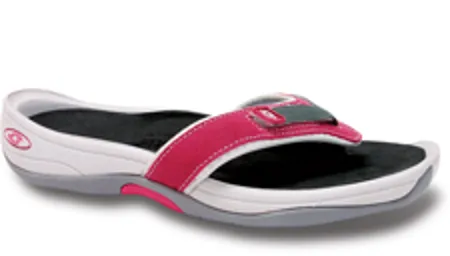
Figure 17‑5: Foot Leveler Flip-Flops.
Every rule has an exception, and my rules are not exempt. Foot Levelers has a flip-flop orthotic that I prescribe for patients who need an easy-to-slip-on shoe to wear while doing dishes or other household activities that do not involve a lot of walking (Figures 17-5). Better to stand on a Foot Leveler flip-flop orthotic than stand unsupported on a hard floor.
If you are going to go for a walk in your sandals, a better option is to wear a sandal orthotic with a heel strap (Figure 17-5). This will prevent the flip-flop action, allowing for a more natural gait.
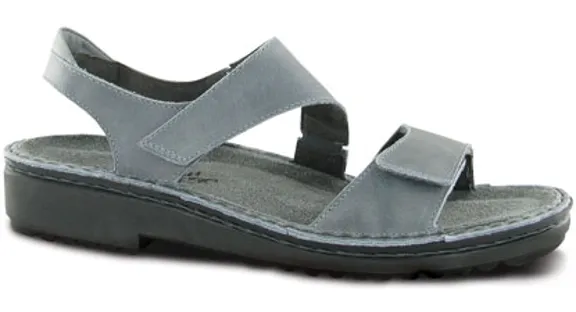
Figure 17‑7: Sandal orthotic you can walk in (has a heel strap).
You don't have to be in pain. Why wait?

to schedule with us.
What Makes A Good-Fitting Shoe?
I’ve talked about the shoes you shouldn’t wear if you want to have healthy feet. Here’s what you should look for in a pair of shoes.
PLENTY OF ROOM FOR THE TOES
Many people wear shoes that are too small. Your feet continue to grow as you age, so double-check your shoe size periodically. You can tell if your shoes are big enough by simply taking out the shoes’ insoles and standing on them. Your feet should fit inside the edges of the insoles. If any part of your foot hangs over an edge—whether it’s the tip of a toe or the side of your foot—the shoes are too small. Many times this test has revealed that the shoes my patients were wearing were too small by a half size or more.
Plus, some people have a longer second toe. Most shoes are designed for a longer first toe. If your second toe is longer, the shoe’s shape may cause it to bend, causing hammer, mallet, or claw toe of the second toe (as discussed in Chapter 7).
Plenty Of Room For The Forefoot
Most shoes are designed with a narrowing of the forefoot (Figure 17-8 as shown below). This design can be uncomfortable for people whose forefoot is wider than their heel.

<- Figure 17‑8: Avoid shoes with a narrow toe box (hard on toes).
Again, standing on the insole should help determine if the shoe’s toe box is wide enough for your toes.
If you like the look of a shoe that narrows in the forefoot, you may be able to wear the shoe but in a larger size.
ORTHOTICS AND SHOE SIZE
One thing I love about being professionally fit for orthotics is it makes shoe sizing easy. You have to take the insoles out of your shoes to make room for the orthotics. When you put the orthotics in the shoe, if the orthotics don’t fit in the shoes, then the shoes are not the right fit for your feet.
Plus, you can buy cheaper shoes, as the expense of the shoe is often due to the insole. You can get a cheaper shoe with a cheap insole, as you are going to replace it with your custom professionally made insoles.
HIGH IMPACT ACTIVITIES ON HARD SURFACES—
A DOUBLE NEGATIVE THAT CAUSES FOOT PAIN, KNEE PAIN, HIP PAIN, BACK PAIN AND MORE
If your job requires you to stand all day, especially on concrete floors, invest in extra padding in your shoes, and see about getting thick rubber mats to lay down in spots where you stand most frequently.
If you have read any of my other books, you know I don’t like to blame age for health problems, but I have to admit, some things are unavoidable aspects of aging. As we get older, our subcutaneous fat thins. This is why our skin wrinkles as we age. In our feet, the fat pad under our heels is made of subcutaneous fat, so it thins as we age. This makes our heel bones more sensitive to hard surfaces as we get older. It just doesn’t seem fair that we lose fat where we need it and gain it where we don’t want it!
You don't have to be in pain. Why wait?
to schedule with us.
Drummond Chiropractic, LLC
Shoe, Foot and Plantar Fasciitis Specialists
565 N Walnut St
Bloomington, IN 47404
(812) 336 - 2423
